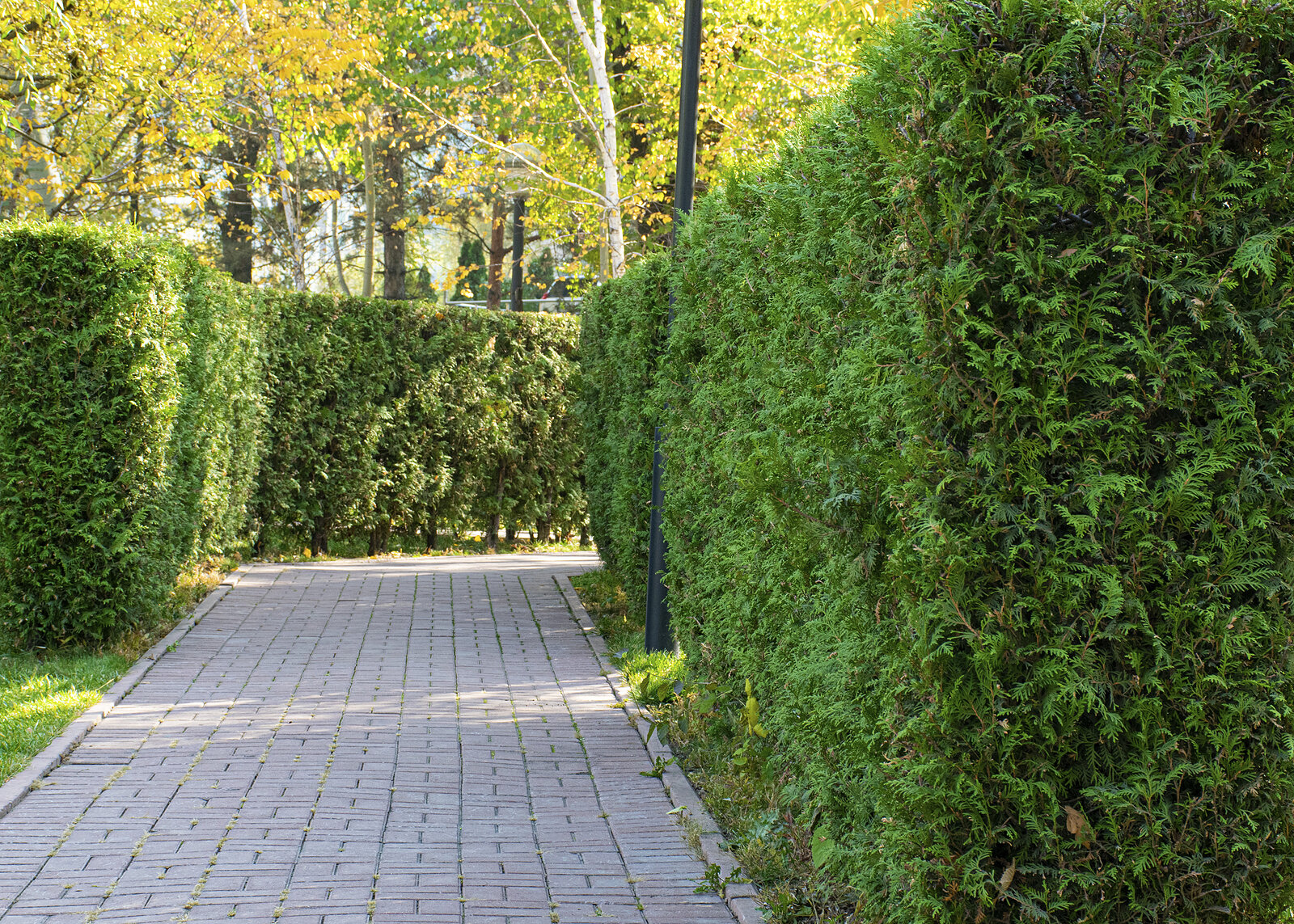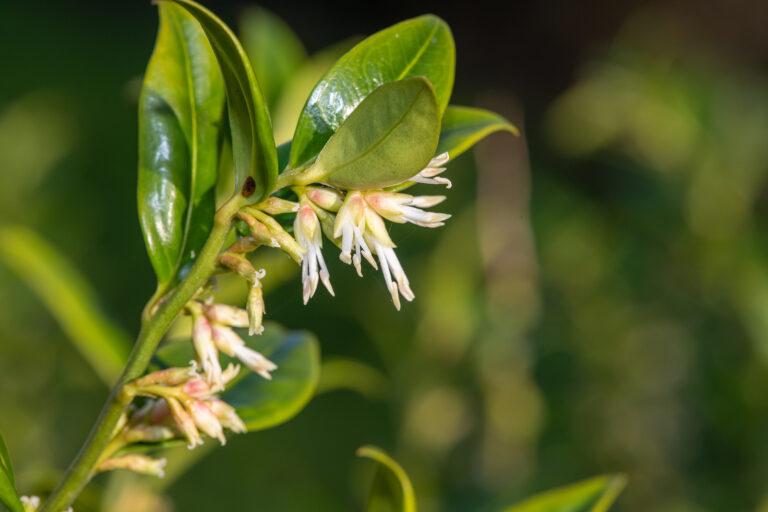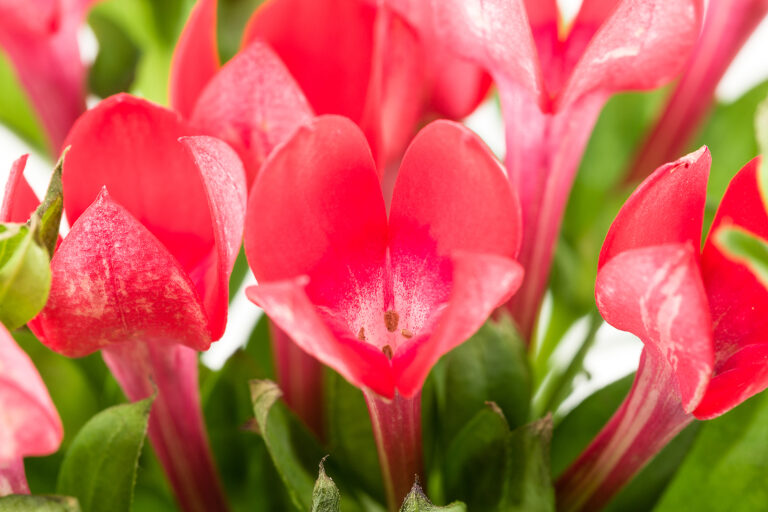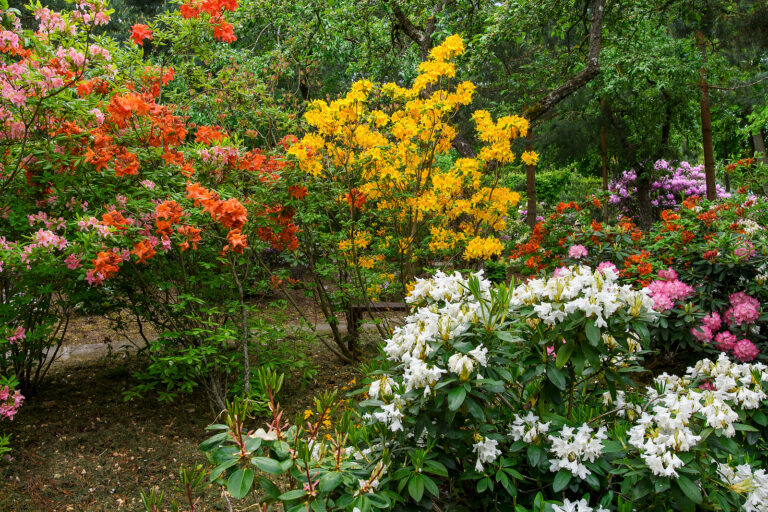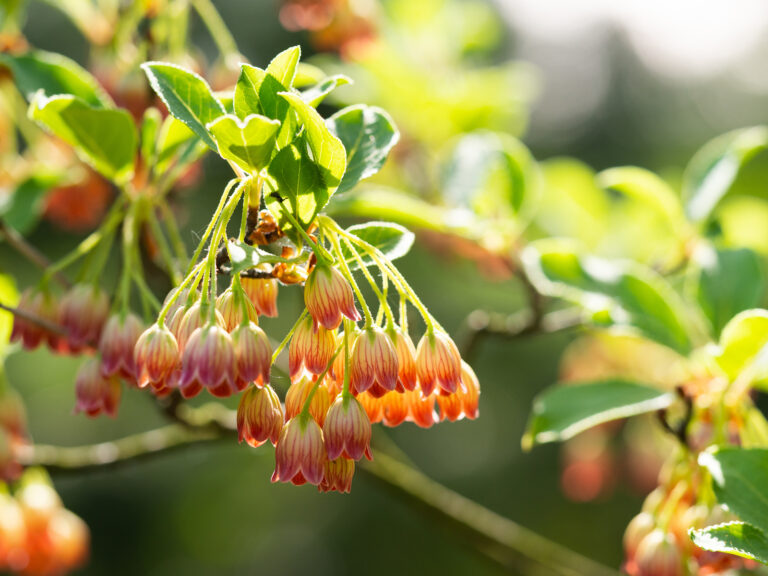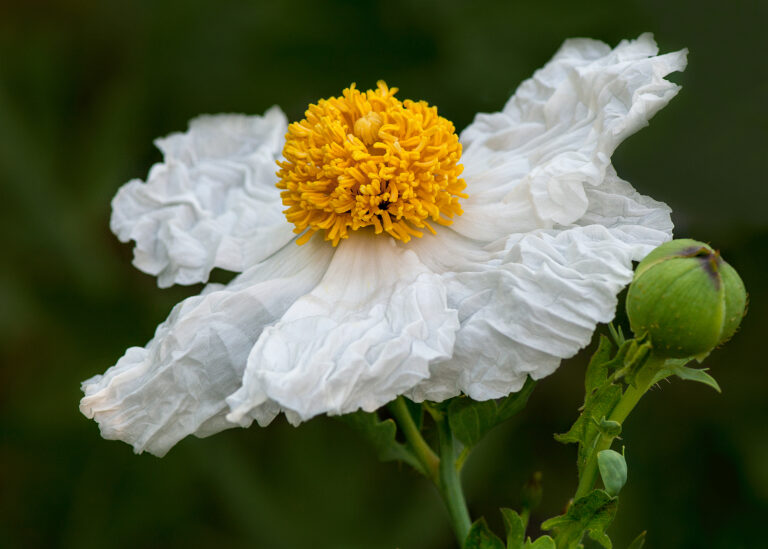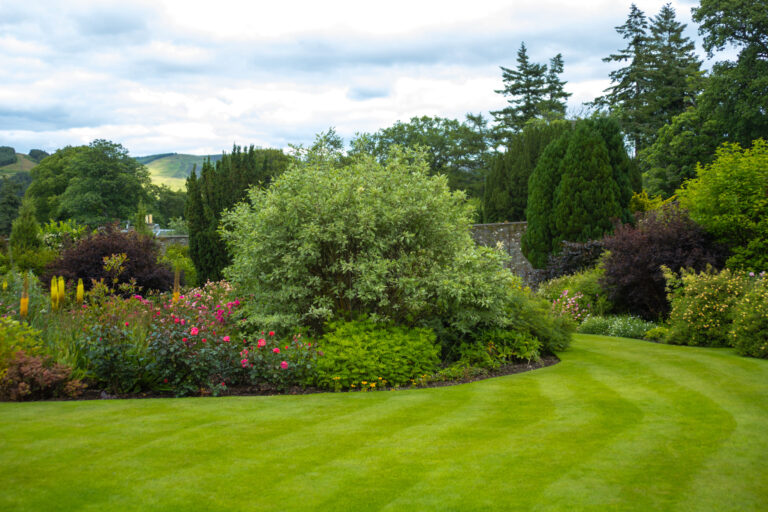How to Grow a Hedge
A hedge is a living wall of continuous, close planted shrubs or trees. Hedges are used to protect and enclose a garden or as a division to set one part of the garden from another.
Hedge does not necessarily imply rigidly pruned and restrained growth, though it often is. A hedge can be formal and impeccably shaped and pruned or it can be informal, almost wild.
A pruned and shaped hedge belongs wherever a stone or similar wall might be used. An unsheared casual hedge belongs to a more free-and-easy environment—and requires more space.
Hedges are not strictly naturalistic because they are almost always composed of just one kind of plant. A natural hedgerow is commonly composed of more than one kind of plant.
Keep in mind when choosing hedge plants for any location: the untrimmed hedge can easily degenerate from a casual to untidy and wild.

Plants for hedges
Hedges are often but not always composed of evergreen plants. Evergreens are plants that keep their foliage through all seasons. Deciduous plants can be used for a hedge, but in winter the absence of leaves will leave the hedge somewhat transparent—less of an enclosure or division.
Proportion is a consideration when selecting hedge plant material. Will the hedge be tall or short, wide or narrow? The growth habit—height and breadth—of a plant should be considered and so the size and color of leaves.
Small-leaved plants in a small or tight garden will offer an unbroken surface when clipped. Shearing or pruning large-leaved plants in a close situation will give a less finished appearance. Large-leaved plants bordering a street or property line may create the right density for that situation.
The first choice for a clipped hedge will almost always be an evergreen; the second choice will be a deciduous shrub or tree with deliberate woody growth. Flowering shrubs are effective for untrimmed hedges; blooms will be sacrificed in a sheared formal hedge.
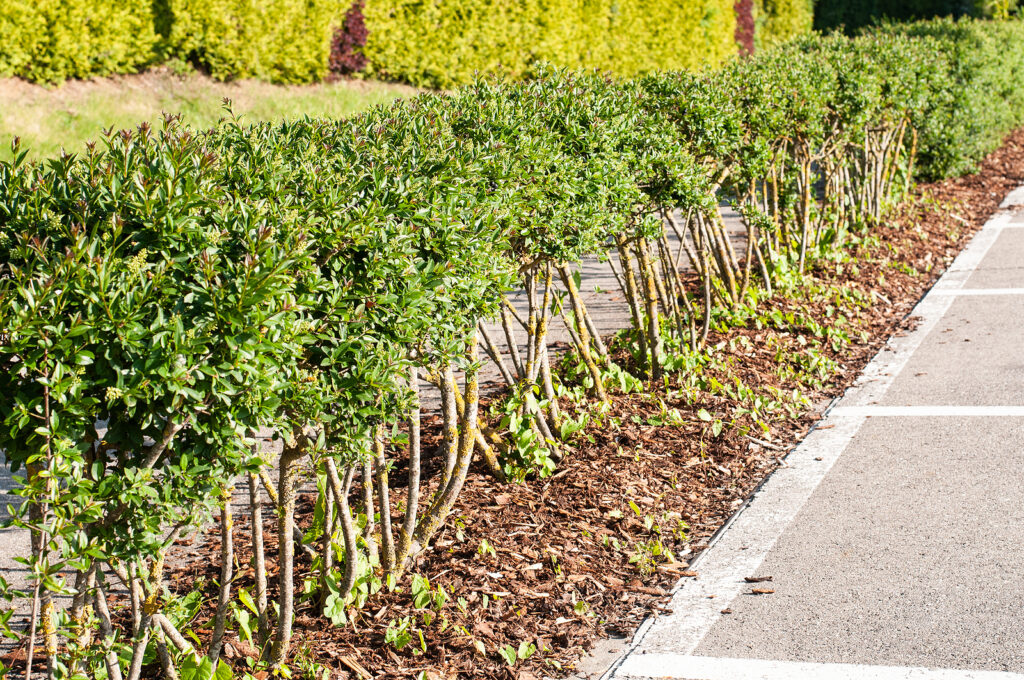
Planting a hedge
Hedge plants are spaced according to the type of plant and the demands of the location. Deciduous plants should be planted as close as 9 to 12 inches (22-30cm) apart; this will yield a closely branched hedge during winter. Evergreens can be planted as close as 18 to 24 inches (45-60cm) apart. This close planting will yield an uninterrupted hedge in a year or so; in later years, as plants mature alternate plants can be removed.
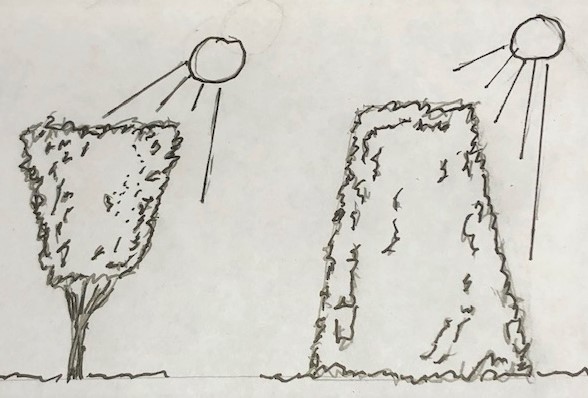
Hedge form
The properly shaped hedge is narrower at the top than at the bottom. The sloping downward and outward sides will allow abundant sunlight to reach the lower branches which is important in preventing lower growth from dying back and giving the hedge an open, “leggy” look. A somewhat rounded top—rather than flat—will help the hedge shed snow instead of accumulating a heavy load that can bend or break branches.
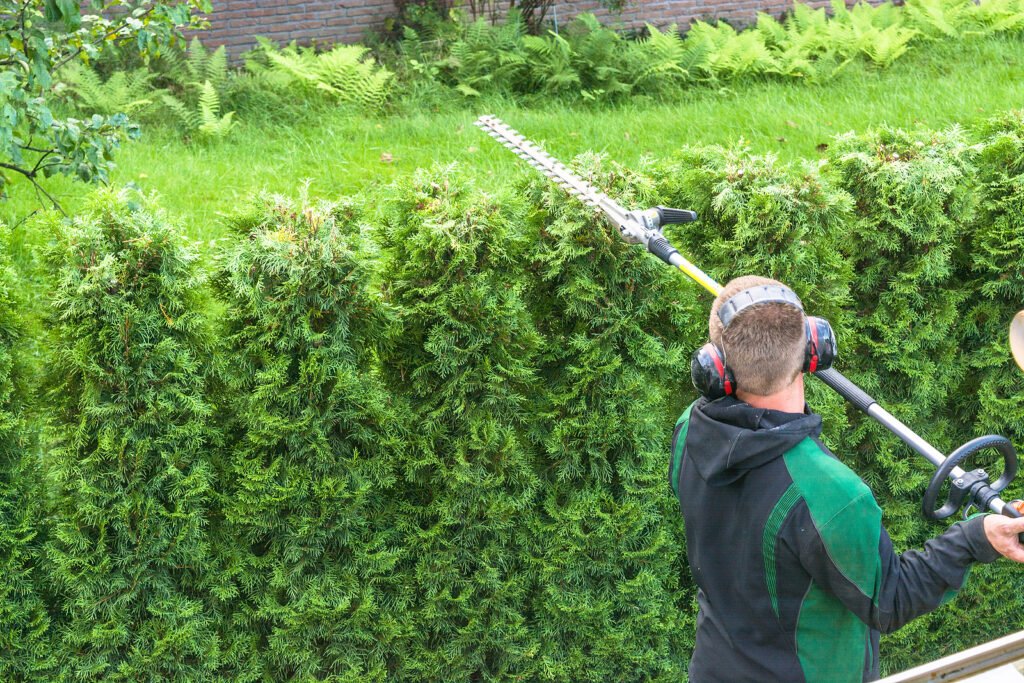
Hedge maintenance
To establish a tight, close hedge, clip, or shear along the sides of the plant but not between them.
Annual clipping of evergreen hedges can be done in late spring or early summer after initial seasonal growth is made. For a formal appearance, trim them again in midsummer. Evergreen hedges should never be severely pruned; simply shape them and once they have filled out maintain that shape.
Annual clipping of deciduous hedges should be done just as the first strong growth of the season is slowing down, in late spring or early summer. Clip deciduous hedges again in late summer after secondary growth is made and if the hedge is looking shaggy.

Shrubs for hedges
| Common Name | Botanical Name | Zones |
| Abelia, glossy | Abelia x grandiflora | 6-9 |
| Arborvitae, Emerald | Thuja occidentalis ‘Emerald’ | 3-8 |
| Azaleas, Exbury | Rhododendron Exbury hybrids | 4-8 |
| Azalea, Northern Lights | Rhododendron ‘Northern Lights’ | 4-7 |
| Barberry, Japanese | Berberis thunbergii | 4-8 |
| Bayberry, northern | Myrica pensylvanica | 2-6 |
| Boxwood, English | Buxus sempervirens ‘Suffruticosa’ | 6-8 |
| Boxwood, Green Beauty | Buxus microphylla ‘Green Beauty’ | 5-9 |
| Boxwood, Korean | Buxus microphylla koreana | 5-9 |
| Boxwood, Wintergreen | Buxus microphylla ‘Wintergreen’ | 4-6 |
| Camellia, sasanqua | Camellia sasanqua | 7-9 |
| Cape honeysuckle | Tecomaria capensis | 10-11 |
| Coralberry | Symphoricarpos orbiculatus | 10-11 |
| Currant, Green Mound alpine | Ribes alpinum ‘Green Mound’ | 2-7 |
| Dogwood, corneliancherry | Cornus mas | 4-8 |
| Dogwood, gray | Cornus racemosa | 4-7 |
| Euonymous, Manhattan spreading | Euonymous kiautschovicus “Manhattan’ | 4-8 |
| Firethorn, scarlet | Pyracantha coccinea | 6-8 |
| Firehorn, Yukon Belle | Pyracantha angustifolia ‘Yukon Belle’ | 5-9 |
| Forsythia, border | Forsythia x intermedia | 6-9 |
| Hawthorn, Indian | Rhaphiolepis indica | 6-9 |
| Hibiscus, Chinese | Hibiscus rosa-sinensis | 9-10 |
| Holly, dwarf Burford | Ilex cornuta ‘Bufordii Nana’ | 6-9 |
| Holly, dwarf Yaupon | Ilex vomitoria ‘Nana’ | 7-10 |
| Holly, Green Lustre | Ilex crenata ‘Green Lustre’ | 4-6 |
| Holly, winterberry | Ilex verticillata | 3-9 |
| Honeysuckles | Lonicera spp. | Varies |
| Ixdora; jungle geranium | Ixora coccinea | 10-11 |
| Jasmine, downy | Jasminum multiforum | 9-10 |
| Juniper, Parson’s | Juniperus chinensis ‘Parsonii’ | 3-9 |
| Juniper, tam | Juniperus sabina ‘Tamariscifolia’ | 3-7 |
| Laurel, cherry | Prunus caroliniana | 6-9 |
| Lilac, common | Syringa vulgaris | 3-7 |
| Lilac, cutleaf | Syringa x laciniata | 4-8 |
| Lilac, Miss Kim | Syringa patula ‘Miss Kim’ | 3-7 |
| Lilac, Persian | Syringa x persica | 3-7 |
| Oleander | Nerium oleander | 8-10 |
| Photinia, redtip | Photinia x fraseri | 6-9 |
| Pieris, Japanese | Pieris japonica | 5-8 |
| Pieris, mountain | Pieris floribunda | 4-8 |
| Pittosporum, Japanese | Pittosporum tobira | 8-10 |
| Potentilla, shrubby | Potentilla fruticosa | 2-7 |
| Privet, Amur | Ligustrum amurense | 3-7 |
| Privet, Chinese variegated | Ligustrum sinense | 7-10 |
| Privet, golden vicary | Ligustrum x vicaryi | 5-8 |
| Privet, wax-leaf | Ligustrum lucidum | 7-10 |
| Rock rose, white | Cistus x hybrids | 8-10 |
| Rose, Betty Prior | Rosa ‘Betty Prior’ | 5-9 |
| Rose, Graham Thomas | Rosa ‘Graham Thomas’ | 5-9 |
| Rose, Iceberg | Rosa ‘Iceberg’ | 4-9 |
| Rose, Peace | Rosa ‘Peace’ | 5-9 |
| Rose, Pink Meidiland | Rosa Pink Meidiland | 5-9 |
| Serviceberry | Amelanchier alnifolia | 4-5 |
| Silverberry | Elaeagnus, pungens | 7-9 |
| Spirea, baby’s breath | Spirea thunbergii | 2-8 |
| Spirea, Vanhoutte | Spirea x vanhouttei | 3-8 |
| Spruce, dwarf Alberta | Picea glauca ‘Conica’ | 3-8 |
| Spruce, dwarf Norway | Picea abies ‘Pumila’ | 3-8 |
| Texas ranger | Leucophyllum frutescens | 8-10 |
| Viburnum, arrowwood | Viburnum dentatun | 3-8 |
| Viburnum, compact American | Viburnum trilobum ‘Alfredo’ | 2-7 |
| Viburnum, sweet | Viburnum odoratissimum | 2-7 |
| Yew, Hick’s upright | Taxus x media ‘Hicksii’ | 4-7 |
| Yew, Anglo-Japanese | Taxus x media ‘Densiformis’ | 4-7 |
Also of interest:

